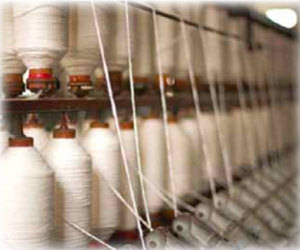 Fitch Ratings has stated that the outlook for Indian cotton textiles is negative to stable in 2012, while the outlook for Indian synthetic textiles is stable. Margin pressure persists for both cotton and synthetic textiles driven by rising wage costs and power costs (in- cluding shortage of power), and higher interest rates. Cotton textiles are also facing challenges of a slower demand pick-up and a loss of margins. However, recov- ery is expected from the falling cotton prices, subject to any further volatility in input costs or forex move- ments. Synthetic textiles benefit from higher demand for blended textiles, although margins can turn volatile in sync with crude oil price volatility.
Fitch Ratings has stated that the outlook for Indian cotton textiles is negative to stable in 2012, while the outlook for Indian synthetic textiles is stable. Margin pressure persists for both cotton and synthetic textiles driven by rising wage costs and power costs (in- cluding shortage of power), and higher interest rates. Cotton textiles are also facing challenges of a slower demand pick-up and a loss of margins. However, recov- ery is expected from the falling cotton prices, subject to any further volatility in input costs or forex move- ments. Synthetic textiles benefit from higher demand for blended textiles, although margins can turn volatile in sync with crude oil price volatility.
Weak demand for cotton and cotton products in YTD FY12 was mainly a result of existing inventories causing mills to postpone any further buying in the backdrop of uncertainty in overseas demand for textiles. Weak demand, labour and power shortage in textile centres such as Bhiwandi and Tirupur have led to about 50 per cent of under-used capaci- ties. Instead of adding capacity in India, garment manu- facturers are looking at options of setting up capacity or outsourcing job work to Bangladesh to benefit from the lower cost of production.
Cash losses for cotton yarn manufacturers and lower- end fabric companies in H112 impaired their debt re- payment capacity leading to several instances of over- utilisation of working capital limits. Some Fitch-rated textile companies defaulted in YTD FY12 due to an in- ability to obtain a timely increase of working capital fa- cilities, as banks tightened lending criteria for the sector.
Refinancing risks would increase for distressed textile companies in 2012 as the Reserve Bank of India and the Finance Ministry have rejected the proposal for restructuring of textile loans.
FY12 financial leverage will deteriorate for most textile companies due to their higher working-capital debt and lower EBITDA compared with previous year’s, and deleveraging will remain a challenge for the sector in 2012.
Given the challenging operating environment led by the uncertainty over demand growth, volatility in raw material prices and persist- ent increases in other op- erating costs, coupled with the stress on liquidity, it is unlikely that the sector’s outlook will turn positive. However, if falling cotton prices translate into a reviv- al of demand and capacity utilisation, the outlook on cotton textiles could turn stable in the last two quarters of 2012.
The outlook on synthetic textiles may be revised to negative if raw material prices increase substantially, making synthetic textiles less competitive than cotton. Downside risks to the outlook also include the adverse impact of policy changes and a prolonged demand slowdown.
Fitch-rated Indian textile companies include Rupa & Company Ltd. (‘Fitch A-(ind)’/Stable), Balkrishna Synthetics Ltd. (‘Fitch BBB-(ind)’/Negative), Ginni Filaments Ltd. (‘Fitch B+(ind)’/Stable) and Eastman Exports Global Clothing Private Ltd. (‘Fitch A-(ind)’/ Stable).